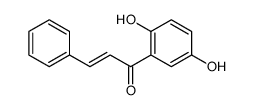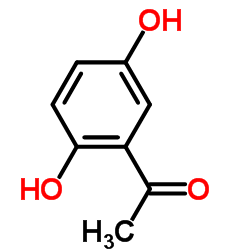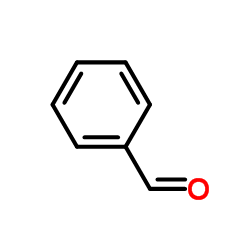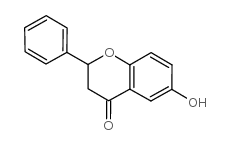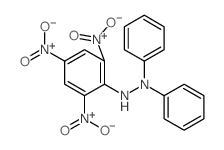108238-41-1
| 中文名 | 3,6-二羟基黄酮 |
|---|---|
| 英文名 | 3,6-dihydroxy-2-phenylchromen-4-one |
| 英文别名 |
3,6-dihydroxy-flavone
2-phenyl-3,6-dihydroxy-4-benzopyrone MFCD00143082 3,6-dihydroxy-2-phenyl-4-benzopyrone 6-Hydroxyflavonol |
| 描述 | 3,6-二羟基黄酮是一种抗癌剂。3,6-二羟基黄酮呈剂量和时间依赖性降低细胞活力,并通过激活caspase级联、切割聚ADP核糖聚合酶(PARP)诱导凋亡。3,6-二羟基黄酮增加细胞内氧化应激和脂质过氧化[1]。 |
|---|---|
| 相关类别 | |
| 参考文献 |
| 密度 | 1.472g/cm3 |
|---|---|
| 沸点 | 477.1ºC at 760 mmHg |
| 熔点 | 231-234ºC |
| 分子式 | C15H10O4 |
| 分子量 | 254.24 |
| 闪点 | 186.2ºC |
| 精确质量 | 254.05800 |
| PSA | 70.67000 |
| LogP | 2.87120 |
| 外观性状 | 固体;White to Orange to Green powder to crystal |
| 蒸汽压 | 6.55E-10mmHg at 25°C |
| 折射率 | 1.712 |
| 储存条件 | 密封储存,储存于阴凉、干燥的库房。远离氧化剂。 |
| 稳定性 | 常温常压下稳定,避免与强氧化剂接触。 |
| 水溶解性 | Soluble in water. |
| 分子结构 | 1、摩尔折射率:67.67 2、摩尔体积(cm3/mol):172.6 3、等张比容(90.2K):504.2 4、表面张力(dyne/cm):72.7 5、介电常数:无可用的 6、极化率(10-24cm3):26.82 7、单一同位素质量:254.057909 Da 8、标称质量:254 Da 9、平均质量:254.2375 Da |
| 计算化学 | 1.疏水参数计算参考值(XlogP):无 2.氢键供体数量:2 3.氢键受体数量:4 4.可旋转化学键数量:1 5.互变异构体数量:6 6.拓扑分子极性表面积66.8 7.重原子数量:19 8.表面电荷:0 9.复杂度:395 10.同位素原子数量:0 11.确定原子立构中心数量:0 12.不确定原子立构中心数量:0 13.确定化学键立构中心数量:0 14.不确定化学键立构中心数量:0 15.共价键单元数量:1 |
| 更多 | 1. 性状:黄色晶体状粉末 2. 密度(g/mL,25℃):未确定 3. 相对蒸汽密度(g/mL,空气=1):未确定 4. 熔点(ºC):231-234 5. 沸点(ºC,常压):未确定 6. 沸点(ºC,2mmHg):未确定 7. 折射率(n20/D):未确定 8. 闪点(ºC):未确定 9. 比旋光度(º):未确定 10. 自燃点或引燃温度(ºC):未确定 11. 蒸气压(mmHg,20ºC):未确定 12. 饱和蒸气压(kPa,25ºC):未确定 13. 燃烧热(KJ/mol):未确定 14. 临界温度(ºC):未确定 15. 临界压力(KPa):未确定 16. 油水(辛醇/水)分配系数的对数值:未确定 17. 爆炸上限(%,V/V):未确定 18. 爆炸下限(%,V/V):未确定 19. 溶解性:未确定 |
|
Section1. IDENTIFICATION OF THE SUBSTANCE/MIXTURE Product identifiers Product name: 3,6-Dihydroxyflavone CAS-No.: 108238-41-1 Relevant identified uses of the substance or mixture and uses advised against Identified uses: Laboratory chemicals, Manufacture of substances Section2. HAZARDS IDENTIFICATION Classification of the substance or mixture Not a dangerous substance according to GHS. This substance is not classified as dangerous according to Directive 67/548/EEC. Label elements Caution - substance not yet tested completely. Other hazards - none Section3. COMPOSITION/INFORMATION ON INGREDIENTS Substances Formula: C15H10O4 Molecular Weight: 254,24 g/mol ComponentConcentration 3,6-Dihydroxyflavone CAS-No.108238-41-1- Section4. FIRST AID MEASURES Description of first aid measures If inhaled If breathed in, move person into fresh air. If not breathing, give artificial respiration. In case of skin contact Wash off with soap and plenty of water. In case of eye contact Flush eyes with water as a precaution. If swallowed Never give anything by mouth to an unconscious person. Rinse mouth with water. Most important symptoms and effects, both acute and delayed Indication of immediate medical attention and special treatment needed no data available Section5. FIRE-FIGHTING MEASURES Extinguishing media Suitable extinguishing media Use water spray, alcohol-resistant foam, dry chemical or carbon dioxide. Special hazards arising from the substance or mixture Carbon oxides Precautions for fire-fighters Wear self contained breathing apparatus for fire fighting if necessary. Further information no data available Section6. ACCIDENTAL RELEASE MEASURES Personal precautions, protective equipment and emergency procedures Avoid dust formation. Avoid breathing vapors, mist or gas. Environmental precautions Do not let product enter drains. Methods and materials for containment and cleaning up Sweep up and shovel. Keep in suitable, closed containers for disposal. Reference to other sections For disposal see section 13. Section7. HANDLING AND STORAGE Precautions for safe handling Provide appropriate exhaust ventilation at places where dust is formed.Normal measures for preventive fire protection. Conditions for safe storage, including any incompatibilities Store in cool place. Keep container tightly closed in a dry and well-ventilated place. Specific end uses no data available Section8. EXPOSURE CONTROLS/PERSONAL PROTECTION Control parameters Components with workplace control parameters Exposure controls Appropriate engineering controls General industrial hygiene practice. Personal protective equipment Eye/face protection Use equipment for eye protection tested and approved under appropriate government standards such as NIOSH (US) or EN 166(EU). Skin protection Handle with gloves. Gloves must be inspected prior to use. Use proper glove removal technique (without touching glove's outer surface) to avoid skin contact with this product. Dispose of contaminated gloves after use in accordance with applicable laws and good laboratory practices. Wash and dry hands. The selected protective gloves have to satisfy the specifications of EU Directive 89/686/EEC and the standard EN 374 derived from it. Body Protection Choose body protection in relation to its type, to the concentration and amount of dangerous substances, and to the specific work-place., The type of protective equipment must be selected according to the concentration and amount of the dangerous substance at the specific workplace. Respiratory protection Respiratory protection is not required. Where protection from nuisance levels of dusts are desired, use type N95 (US) or type P1 (EN 143) dust masks. Use respirators and components tested and approved under appropriate government standards such as NIOSH (US) or CEN (EU). Section9. PHYSICAL AND CHEMICAL PROPERTIES Information on basic physical and chemical properties a) AppearanceForm: solid b) Odourno data available c) Odour Thresholdno data available d) pHno data available e) Melting/freezing point Melting point/range: 231 - 234 °C - lit. f) Initial boiling point and no data available boiling range g) Flash pointno data available h) Evaporation rateno data available i) Flammability (solid, gas) no data available j) Upper/lowerno data available flammability or explosive limits k) Vapour pressureno data available l) Vapour densityno data available m) Relative densityno data available n) Water solubilityno data available o) Partition coefficient: n- no data available octanol/water p) Autoignitionno data available temperature q) Decompositionno data available temperature r) Viscosityno data available s) Explosive propertiesno data available t) Oxidizing propertiesno data available Other safety information no data available Section10. STABILITY AND REACTIVITY Reactivity no data available Chemical stability no data available Possibility of hazardous reactions no data available Conditions to avoid no data available Incompatible materials Strong oxidizing agents Hazardous decomposition products Other decomposition products - no data available Section11. TOXICOLOGICAL INFORMATION Information on toxicological effects Acute toxicity no data available Skin corrosion/irritation no data available Serious eye damage/eye irritation no data available Respiratory or skin sensitization no data available Germ cell mutagenicity no data available Carcinogenicity IARC:No component of this product present at levels greater than or equal to 0.1% is identified as probable, possible or confirmed human carcinogen by IARC. Reproductive toxicity no data available Specific target organ toxicity - single exposure no data available Specific target organ toxicity - repeated exposure no data available Aspiration hazard no data available Potential health effects InhalationMay be harmful if inhaled. May cause respiratory tract irritation. IngestionMay be harmful if swallowed. SkinMay be harmful if absorbed through skin. May cause skin irritation. EyesMay cause eye irritation. Additional Information RTECS: Not available Section12. ECOLOGICAL INFORMATION Toxicity no data available Persistence and degradability no data available Bioaccumulative potential no data available Mobility in soil no data available Results of PBT and vPvB assessment no data available Other adverse effects no data available Section13. DISPOSAL CONSIDERATIONS Waste treatment methods Product Offer surplus and non-recyclable solutions to a licensed disposal company. Contaminated packaging Dispose of as unused product. Section14. TRANSPORT INFORMATION UN-Number ADR/RID: -IMDG: -IATA: - UN proper shipping name ADR/RID: Not dangerous goods IMDG: Not dangerous goods IATA:Not dangerous goods Transport hazard class(es) ADR/RID: -IMDG: -IATA: - Packaging group ADR/RID: -IMDG: -IATA: - Environmental hazards ADR/RID: noIMDG Marine pollutant: noIATA: no Special precautions for users no data available SECTION 15 - REGULATORY INFORMATION N/A SECTION 16 - ADDITIONAL INFORMATION N/A |
|
生态学数据: 对水稍微危害,避免未稀释或大量的产品接触地下水、水道或污水系统。 若无政府许可,勿将材料排入周围环境。
|
| WGK德国 | 3 |
|---|---|
| 海关编码 | 2914400090 |
|
~69% 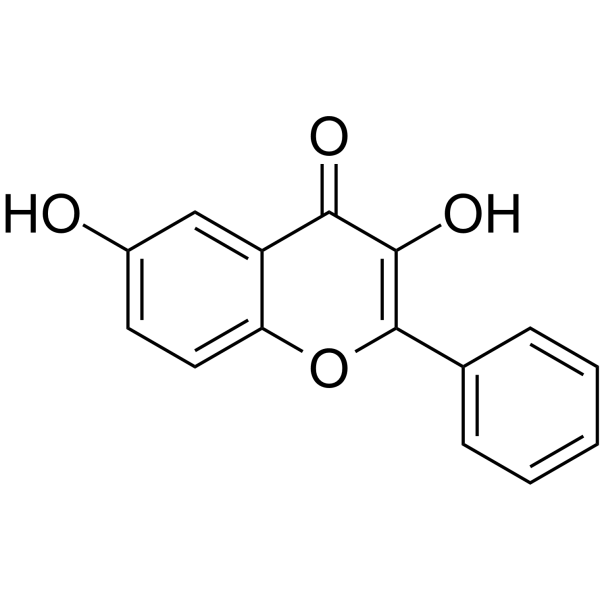
108238-41-1 |
| 文献:Jayashree; Thejaswini; Nayak, Yogendra; Kumar, D. Vijay Asian Journal of Chemistry, 2010 , vol. 22, # 2 p. 1055 - 1066 |
|
~% 
108238-41-1 |
| 文献:Current Science, , vol. 25, p. 393 |
|
~% 
108238-41-1 |
| 文献:Journal of Molecular Graphics and Modelling, , vol. 49, p. 38 - 46 |
|
~% 
108238-41-1 |
| 文献:Current Science, , vol. 25, p. 393 Proceedings - Indian Academy of Sciences, Section A, , # 32 p. 386,387 |
|
~% 
108238-41-1 |
| 文献:Current Science, , vol. 25, p. 393 |
|
~% 
108238-41-1 |
| 文献:Current Science, , vol. 25, p. 393 |
|
~% 
108238-41-1 |
| 文献:Current Science, , vol. 25, p. 393 |
| 海关编码 | 2914400090 |
|---|---|
| 中文概述 | 2914400090 其他酮醇及酮醛。监管条件:无。增值税率:17.0%。退税率:9.0%。最惠国关税:5.5%。普通关税:30.0% |
| 申报要素 | 品名, 成分含量, 用途, 丙酮报明包装 |
| Summary | 2914400090 other ketone-alcohols and ketone-aldehydes。Supervision conditions:None。VAT:17.0%。Tax rebate rate:9.0%。MFN tariff:5.5%。General tariff:30.0% |


